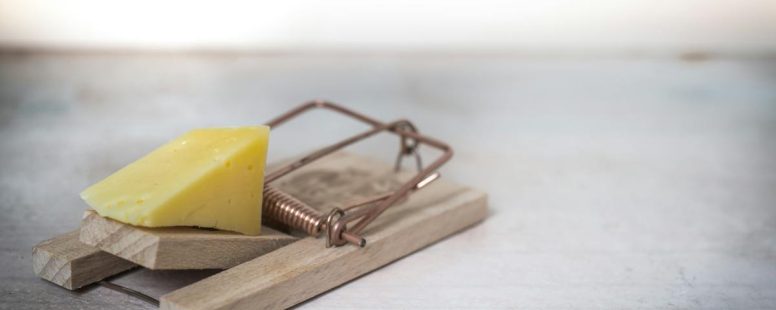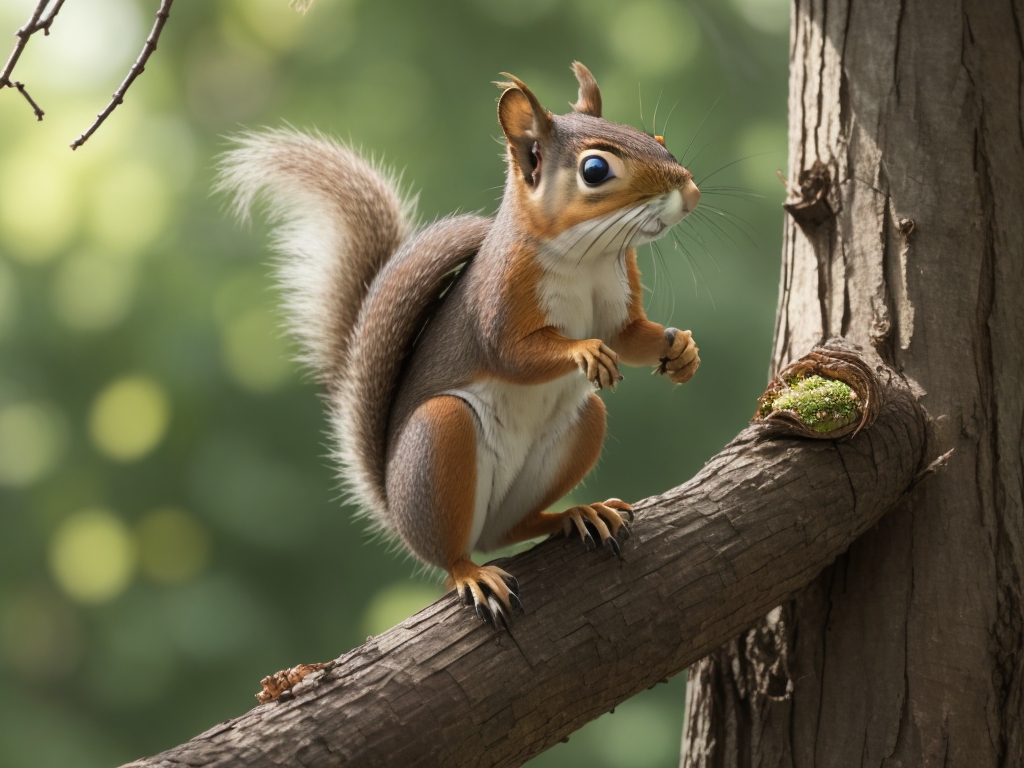Top Squirrel Baits: Lure Them In With Ease
Trapping a squirrel can be quite the challenge, but with the right bait, you’re halfway to success. You’re about to discover the top baits that’ll turn your squirrel-trapping endeavors from frustrating to fruitful.
Whether you’re dealing with a garden intruder or a loft dweller, knowing the best bait is crucial. Stick around as we reveal the irresistible morsels that squirrels can’t say no to, ensuring your trap isn’t overlooked.
Why Choosing the Right Bait Is Important When Trapping Squirrels
When you’re aiming to trap squirrels, it’s not just about setting up a trap. The bait coaxing them in is the real MVP of this endeavor. It’s like fishing; your bait must not only be enticing but also appropriate for your catch. Choosing the right bait is crucial, and here’s why: squirrels have a keen sense of smell and are discerning eaters. Your success hinges on using a bait that appeals to their tastes and habits.
Using the correct bait can dramatically increase the chances of a successful trap. It works by mimicking the squirrel’s natural diet, encouraging them to enter the trap without suspicion. For instance, nuts, seeds, and fruits are magnets for these fluffy-tailed creatures. When they spot a favorite snack, it’s much harder for them to resist. This isn’t just about making the trap inviting; it’s about making sure the squirrel feels safe to enter it.
Wrong bait choices, on the other hand, could mean your trap sits idle for days. And if you’re dealing with a squirrel in your attic or gnawing on your home’s wiring, that’s time you simply can’t afford to waste. Moreover, using the wrong bait can attract unwanted visitors, like raccoons or even neighborhood pets, creating an entirely new set of problems.
The variety in a squirrel’s diet also means you need to be smart with your selection. Depending on the time of year and what food sources are abundant, squirrels may prefer different baits. In the spring and early summer, they might be more enticed by fresh fruits or tender plant buds, while during the fall, nuts and seeds are more appealing as they prepare for winter.
Knowing what to use and when is imperative for trapping squirrels effectively. It’s not just about laying out the bait; it’s about understanding their eating patterns and preferences to outsmart them. Stick with options that are proven squirrel pleasers, and you’ll turn your pest problem into a hand-off wildlife capture.
Understanding the Feeding Habits of Squirrels
When setting out to trap a squirrel, it’s essential to think like one. Squirrels are opportunistic foragers who aren’t picky eaters but their preferences shift with the seasons. In spring and summer, their diet predominantly consists of fruits and nuts. Come fall, they’re on the hunt for acorns and other tree seeds to fatten up for the colder months. By winter, they may dig up the caches they’ve hidden or scavenge for whatever’s available.
Knowing these habits, you should cater to their current cravings. Use fresh oranges or apples in the warmer months. Switch to walnuts or pecans when the leaves start to turn. This mimics their natural diet and increases the likelihood that a squirrel will find your bait irresistible.
Beyond what squirrels eat, it’s important to observe how they eat. Squirrels are cautious creatures. They prefer to grab their food quickly and retreat to safety. For this reason, your bait should be easy to access and carry away. Avoid anything too sticky or messy that might deter them from a quick escape.
As you’re setting your trap, put yourself in the squirrel’s paws. Is the bait visible and enticing? Have you placed your trap in a quiet, less disturbed area? The more comfortable a squirrel feels approaching your trap, the better your chances of catching one.
Keep in mind, squirrels have strong senses of smell. Fresh bait will not only attract them more effectively but also reduce the risk of luring non-target animals. While you’re loading your trap, using gloves can prevent transferring your scent to the bait or trap, which could make squirrels wary.
Experiment with different types of bait and observe. What works in one instance might not be as effective in another, or in a different location. Vigilance and adaptability are key to trapping success. Keep tweaking your approach based on what the squirrels in your area are showing you they like best.
Top Baits to Attract Squirrels
When you’re gearing up to trap a squirrel, knowing the top baits can dramatically improve your odds. Keep in mind squirrels have a keen sense of smell, so potent, aromatic foods often do the trick.
Begin with peanut butter; its strong scent and sticky texture are irresistible to these critters. Smear a small amount on the trap trigger. It sticks around long enough to lure in your target and is tempting for an array of squirrel species.
Whole peanuts in the shell, unsalted and unroasted, can also act as a magnet for squirrels. They can’t resist the natural flavor, and the effort of cracking the shells keeps them occupied long enough to be trapped.
Freshly chopped fruit slices, particularly apple or orange, bring a sweet aroma that squirrels find hard to ignore. Ensure these are placed in a way that requires the squirrel to engage with the trap mechanism.
Sunflower seeds and corn are excellent choices during the colder months when squirrels are scavenging for caloric-rich foods. Sprinkling these around and inside the trap can effectively coax squirrels in.
For those looking for a pre-made solution, commercial squirrel baits are available. These often combine multiple enticing ingredients and can save time. Consider products like Squirrel Lure or Rodent Bait which are specifically formulated to attract squirrels without drawing in unwanted animals.
Remember to place baits strategically in areas you’ve noticed squirrel activity. Using protective gloves while handling the bait and trap can prevent the transfer of human scent, which might spook squirrels away.
Test various baits and monitor the results. Squirrels in your area may have specific tastes that you’ll need to adapt to. With a bit of patience and observation, you’ll determine the supreme bait for trapping the bushy-tailed foragers in your backyard.
Using Nut-Based Baits to Catch Squirrels
Capturing squirrels can be made simpler when you opt for nut-based baits. These furry critters naturally hunt for nuts to store for the winter, so it makes perfect sense that they’re attracted to these types of baits.
When picking nut-based baits, peanut butter stands out as a top choice. Its creamy texture and strong aroma draw squirrels in from afar. Spread a spoonful on the trap’s trigger plate and you’ll likely see some action. Whole peanuts, both shelled and unshelled, are also highly effective. Since squirrels cache nuts for later consumption, these baits tap into their instinctual foraging behavior.
Specific Nut-Based Products
For those less inclined to mess with natural nuts, there are commercial options, like squirrel-specific paste baits. These products combine multiple nut essences into a single, convenient formula.
- Squirrel Lure Paste by RodentPro
- Nutty Buddy Squirrel Attractant
These products mimic the scent of a squirrel’s natural diet and can often persuade even the most cautious critters to investigate your trap.
Best Practices for Nut Baits
Keep in mind that freshness matters. Squirrels have a keen sense of smell, and stale nuts won’t be as alluring as fresh ones. Always refresh your bait every couple of days to maintain its potency.
Remember to wear protective gloves when setting up your trap. It’s crucial for keeping human scent off the bait which could deter squirrels from approaching. Place the baits in locations with high squirrel activity; lookout for gnawed nuts or droppings to identify hotspot areas.
Don’t get disheartened if your first bait choice doesn’t yield results. Squirrels have varying tastes, and what works well for one may not appeal to another. Be prepared to swap out different types of nut-based baits until you find the one that does the trick in your backyard.
Testing Different Bait Options for Squirrel Trapping
When you’re on the hunt for the perfect squirrel bait, trial and error is your best approach. Start with the basics: peanut butter and whole peanuts are tried-and-true options that rarely disappoint. If those don’t yield the results you’re after, it’s time to test the waters with commercial paste baits. These products are engineered to mimic the irresistible aroma of a squirrel’s preferred munchies.
Placement is key. Be sure to introduce these baits where squirrels frequent, such as near bird feeders or in established foraging grounds. Observe which bait options garner the most attention, and note the time of day when squirrels are most active. This information could be pivotal in fine-tuning your approach.
Consider these specific strategies:
- Mix it up: Combine peanut butter with seeds or grains. The texture variation can pique the interest of squirrels.
- Go natural: Try using fruit slices like apple or banana. Their sweet scents can attract squirrels looking for a sugary treat.
- Stay fresh: Replace baits regularly to ensure the scent remains potent.
Monitoring your results is critical. Keep a log of bait types, placement, and squirrel activity patterns. Refine your strategy based on your observations. You might discover that certain baits work better at different times of the year or that a combination of foods is more enticing than any single option.
Remember, patience is a virtue in the realm of squirrel trapping. The right bait can make all the difference, but so can your persistence and willingness to adapt your methods. Keep experimenting, and you’re bound to find the bait that brings the squirrels right to your trap.
Tips for Setting Up Your Squirrel Trap Effectively
When you’re looking to trap squirrels, it’s not just about choosing the right bait; it’s also about how you set up your trap. You want to make sure you’re doing everything possible to entice the squirrels. Here are some expert tips that’ll help you set up your squirrel trap effectively, increasing your chances of success.
First, identify the high-traffic areas where squirrels frequent. Look for signs of squirrel activity, like gnawed nuts or small openings in your yard that they may use to store food. Place the trap along these routes. This strategic placement means squirrels are more likely to encounter it during their search for food.
Ensure that the trap is stable and level. A wobbly trap can scare squirrels away. If need be, use bricks or wooden blocks to secure it. The doors should open smoothly, and you should check the trigger sensitivity. A trap that springs too easily or not at all will not serve your purpose.
It’s smart to camouflage your trap. Use leaves, branches, or other natural materials to blend it with the surroundings. Squirrels will be warier of something that looks out of place, so keeping your trap inconspicuous is key.
Minimize your scent on the trap by wearing gloves when handling it. Squirrels have a keen sense of smell, and your human scent can be a red flag. When you bait the trap, remember the tips on using peanut butter, whole peanuts, and other nuts that you’ve already found to be effective. Combining these baits with the steps to set up your trap properly maximizes the likelihood of capturing your furry subjects.
Lastly, regularly check your trap. Leaving a squirrel trapped for too long is inhumane and could deter other squirrels from approaching the trap. Frequent checks ensure that any captured squirrel is dealt with swiftly and humanely, and it allows you to refresh the bait as needed, ensuring it remains tempting.
By following these detailed steps, you’ll have a well-set trap that squirrels find irresistible. Remember, patience and observation go a long way in refining your trapping technique. Keep track of what works, and don’t hesitate to make adjustments based on your experiences.
Conclusion
Landing on the perfect squirrel bait can be a game-changer for your trapping endeavors. You’ve learned that a mix of peanut butter with seeds or grains, fresh fruit slices, and the allure of whole peanuts can be irresistible to these critters. Remember, it’s all about persistence and adapting your strategies. Keep your bait fresh, your traps well-placed in high-traffic areas, and your approach flexible. With a bit of patience and a keen eye on the patterns of squirrel visits, you’ll find the bait that works best for you. Happy trapping!
- Decorating Your Backyard with Homemade Birdhouses: Creative Ideas to Attract Birds & Beautify Your Garden - October 3, 2025
- Creating Stepping Stones with Kids: A Fun Backyard Project for Family Bonding and Creativity - October 3, 2025
- Where Can I Sell Pottery Locally? Best Places and Tips for Selling Handmade Ceramics - October 3, 2025




